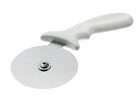Apple has docs on it of course,
this link is a bit more concise.
Well, lacking a working Mac to create the installer boot drive, that link does indicate a Genius Bar appointment can be made to do the same on one of their machines, so there is that.
Once the installer is on a thumb drive, the rest is very simple and step-by-step easy, the installer wizard guides you through and it doesn't even take that long.
Probably easier to create the installer at a Genius Bar appointment than it is to attempt creation on a Windows machine using 3rd party software, however easiest yet is to have the shop installing the SSD do the work, it just costs more.
This actually brings up an interesting side discussion on all of this, that being the most hard core macOS users apparently always keep a bootable installer drive available for just this kind of instance, and whenever they elect to do a full version update (say Big Sur -> Monterey upgrade), they first create a bootable installer drive for Big Sur, so that it's easy to go back if they need to.
This is considered safer than relying solely on a Time Machine backup, and the most hard core of macOS users actually keep bootable installers going back several versions, just in case they ever want/need to go backwards more than one OS version, especially on an older machine that might not even be able to run the very latest versions (my 2012 Mac mini would be one such example).
When I did this last a few years back, I kept that installer thumb drive around for quite a long while afterwards, and only last Christmas did I wipe that thumb drive clean to be repurposed as additional storage for my Chromecast through a USB-C hub, solving the problem of limited Chromecast onboard storage capacity.
If I were to return to best practice now, I'd create another bootable installer drive to have handy/ready if needed, though admittedly the actual need for such a thing is far less when the Mac has an SSD installed, than it used to be in the good ol' days of "not if but when" failure of HDDs.





